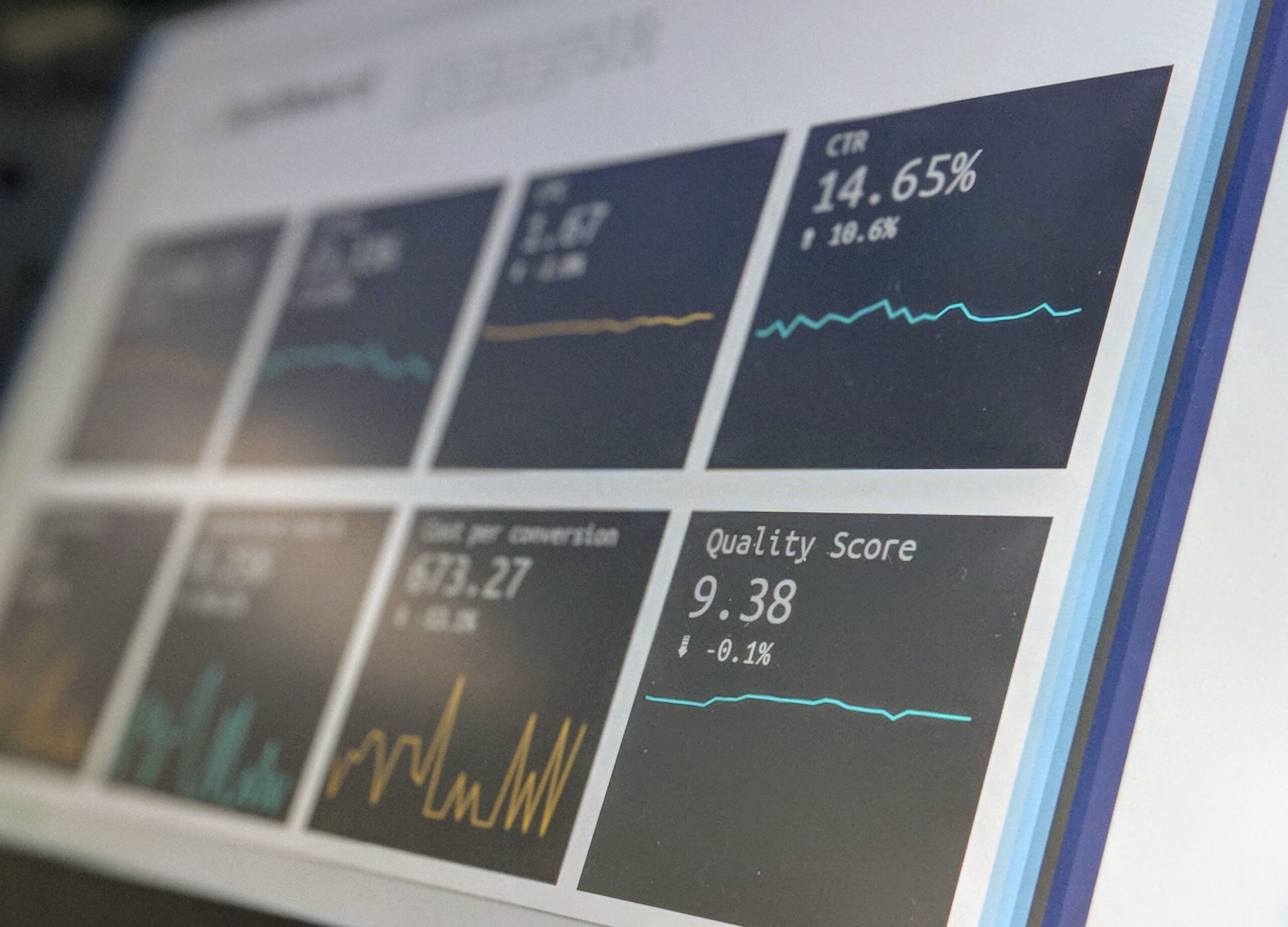In this article, you will discover the importance of developing a clear risk management strategy as part of your overall risk management plan. Whether you are a business owner, project manager, or simply someone looking to mitigate potential risks, having a well-defined strategy is vital. By outlining specific steps and measures to identify, assess, and respond to risks, you can ensure a smoother and more successful journey towards achieving your goals. So, let’s explore how you can effectively develop a clear risk management strategy to safeguard your interests and enhance your decision-making process.
Identify Risks
Understand the project or business context
When developing a risk management plan, the first step is to thoroughly understand the project or business context. This includes identifying the objectives, scope, and stakeholders involved. By gaining a clear understanding of the project or business, you can effectively identify and assess the potential risks that may arise.
Identify potential risks and their causes
Once you have a clear understanding of the project or business context, it is important to identify potential risks and their causes. Risks can be internal or external, and they can arise from various sources such as technology, human error, or market volatility. It is crucial to conduct a comprehensive analysis to identify all possible risks that may impact the success of the project or business.
Categorize risks based on their likelihood and impact
After identifying potential risks, it is necessary to categorize them based on their likelihood and impact. This categorization helps in prioritizing risks and allocating resources effectively. Risks can be categorized as low, medium, or high based on the probability of their occurrence and the potential impact they may have on the project or business. By categorizing risks, you can focus on addressing the high-priority risks first and allocate resources accordingly.
Assess Risks
Evaluate the likelihood of each risk
Once risks have been identified and categorized, the next step is to evaluate the likelihood of each risk. This involves assessing the probability of the risk occurring based on historical data, expert opinion, or other relevant sources. By evaluating the likelihood of each risk, you can determine which risks are more likely to occur and require immediate attention.
Determine the potential impact of each risk
Along with evaluating the likelihood, it is essential to determine the potential impact of each risk. This involves assessing the consequences or severity of each risk on the project or business. The impact can be measured in terms of financial loss, reputation damage, or any other relevant metric. By determining the potential impact, you can prioritize risks based on their severity and allocate resources accordingly.
Prioritize risks based on their severity
After evaluating the likelihood and impact of each risk, it is crucial to prioritize them based on their severity. High-priority risks are those that have a high likelihood of occurrence and a significant impact on the project or business. These risks should be addressed first and given top priority in the risk management plan. By prioritizing risks, you can ensure that the most critical risks are addressed in a timely manner, reducing the overall risk exposure.
Plan Risk Responses
Develop strategies to avoid or mitigate high-priority risks
To effectively manage risks, it is important to develop strategies to avoid or mitigate high-priority risks. This involves identifying specific actions or measures that can be taken to prevent the occurrence of these risks or lessen their impact. For example, if a high-priority risk is the failure of a critical system, a strategy could be to implement regular maintenance and backups to minimize the risk of system failure.
Create contingency plans for unavoidable risks
While it is ideal to avoid or mitigate risks, there may be some risks that are unavoidable. In such cases, it is essential to create contingency plans. Contingency plans outline the steps to be taken if a risk does occur, helping to minimize its impact and ensure timely recovery. Contingency plans should be well-documented and communicated to all relevant stakeholders, so everyone is aware of the actions to be taken in case of a risk event.
Assign responsibilities and set deadlines for risk response actions
To ensure accountability and timely response to risks, it is important to assign responsibilities and set deadlines for risk response actions. Each risk response action should have a designated person or team responsible for its execution. By assigning responsibilities, you can ensure that everyone understands their role and is actively working towards managing the risks. Setting deadlines helps in tracking the progress of risk response actions and ensures that they are completed within the desired timeframe.
Monitor and Control Risks
Establish a system to track risks throughout the project or business operation
To effectively manage risks, it is crucial to establish a system to track risks throughout the project or business operation. This includes regular monitoring and updating of risk information. By establishing a tracking system, you can ensure that risks are continuously monitored, and any changes or developments are captured in a timely manner. This enables proactive management of risks and reduces the chances of risks escalating without timely intervention.
Regularly review and update risk information
Risk management is an ongoing process, and as such, it is necessary to regularly review and update risk information. This includes revisiting the identified risks, reassessing their likelihood and impact, and updating the risk response actions if necessary. Regular reviews help in staying up-to-date with the changing risk landscape and enable effective risk management throughout the project or business operation.
Implement corrective actions when necessary
During the monitoring and control phase, it is crucial to implement corrective actions when necessary. This involves revising risk response actions, reallocating resources, or taking additional measures to address any new or emerging risks. Implementing corrective actions in a timely manner helps in minimizing the impact of risks and ensures that the project or business stays on track towards its objectives.
Integrate Risk Management Into Decision-Making
Utilize risk analysis to inform strategic decisions
Risk analysis plays a crucial role in informing strategic decisions. By utilizing risk analysis, decision-makers can assess the potential risks associated with different options and evaluate their likelihood and impact. This helps in making informed decisions that take into account potential risks and their consequences, thus minimizing the chances of making decisions that may expose the project or business to unnecessary risks.
Consider risk implications when developing plans or making changes
When developing plans or making changes, it is important to consider the implications on risk management. This involves evaluating how the proposed plans or changes may introduce new risks or impact existing risk response actions. By considering risk implications, you can ensure that risk management is an integral part of the decision-making process and that appropriate measures are taken to address any potential risks.
Ensure risk management is an ongoing process, integrated into all aspects of the organization
Risk management should not be a one-time activity but rather an ongoing process that is integrated into all aspects of the organization. It should be embedded in the organizational culture and reflected in the day-to-day operations. By ensuring that risk management is ingrained in the organization, it becomes a proactive approach to identifying and addressing risks, rather than a reactive response to risk events.
Communicate and Document
Develop clear and concise risk management communications
Effective communication is crucial for successful risk management. It is important to develop clear and concise risk management communications that can be easily understood by all stakeholders. This includes communicating the identified risks, their likelihood and impact, as well as the risk response actions being taken. Clear communication ensures that everyone is on the same page regarding the risks involved and their management.
Document risks, assessments, and response plans
Documentation is a key component of risk management. It is important to document all risks identified, along with their assessments and response plans. This documentation helps in maintaining a record of all risks and their management activities, serving as a reference for future projects or for evaluating the effectiveness of the risk management plan. It also provides transparency and accountability, as stakeholders can review the documented information to understand the decision-making process.
Regularly update stakeholders on the status of risks
Keeping stakeholders informed about the status of risks is crucial for effective risk management. Regular updates should be provided to all relevant stakeholders, including project teams, senior management, and external parties. These updates should highlight any changes in the risk landscape, progress on risk response actions, and any new risks that may have emerged. By providing regular updates, stakeholders can actively contribute to risk management and stay aligned with the project or business objectives.

Train and Educate
Provide training on risk management principles and practices
To ensure that risk management is effectively implemented, it is important to provide training on risk management principles and practices. This includes educating stakeholders on the overall risk management process, risk identification techniques, and the importance of proactive risk management. By providing training, stakeholders can develop the necessary skills and knowledge to actively contribute to risk management efforts.
Educate employees on how to recognize and report risks
Beyond training, it is important to educate employees on how to recognize and report risks. Employees are often on the front lines of identifying potential risks, as they are actively involved in day-to-day operations. By educating them on what to look out for and how to report risks, you can create a culture of risk awareness and encourage timely reporting. This empowers employees to play an active role in risk management and contributes to overall risk mitigation.
Promote a culture of risk awareness and accountability
In addition to training and education, it is crucial to promote a culture of risk awareness and accountability within the organization. This involves creating an environment where everyone understands the importance of managing risks and takes personal responsibility for their actions. By promoting a culture of risk awareness and accountability, you create an organization that proactively manages risks and actively seeks opportunities for improvement.
Establish Risk Management Policies and Procedures
Define clear policies and procedures for risk management
To ensure consistency and effective risk management, it is important to define clear policies and procedures for risk management. These policies and procedures should outline the steps to be followed for risk identification, assessment, and response planning. By establishing clear guidelines, you create a standardized approach to risk management that can be applied across different projects or business operations.
Establish guidelines for risk identification, assessment, and response planning
Along with policies and procedures, it is important to establish guidelines for risk identification, assessment, and response planning. These guidelines provide a framework for stakeholders to follow when engaging in risk management activities. They outline the criteria for identifying and assessing risks, as well as the factors to consider when developing response plans. By establishing guidelines, you ensure that risk management is conducted in a consistent and systematic manner.
Ensure compliance with relevant standards and regulations
Risk management should be aligned with relevant standards and regulations. It is crucial to conduct a thorough review of any applicable standards and regulations and ensure compliance when developing the risk management plan. By adhering to established standards and regulations, you can mitigate legal and compliance risks, as well as enhance the overall effectiveness of the risk management process.
Evaluate Effectiveness
Measure the effectiveness of the risk management plan
To ensure that the risk management plan is effective, it is necessary to measure its effectiveness. This involves regularly reviewing and evaluating the outcomes of the risk management activities. Key performance indicators (KPIs) can be established to measure the success of risk response actions, the level of risk exposure, and the overall performance of the risk management plan. By measuring effectiveness, you can identify areas of improvement and make necessary adjustments to enhance the risk management process.
Assess the success of risk response actions
In addition to evaluating the overall effectiveness of the risk management plan, it is important to assess the success of individual risk response actions. This involves evaluating whether the implemented actions have effectively mitigated the identified risks or reduced their impact. By assessing the success of risk response actions, you can identify any gaps or areas for improvement in the risk management plan, enabling continuous refinement and enhancement.
Identify areas for improvement
While evaluating the effectiveness of the risk management plan, it is crucial to identify areas for improvement. This includes analyzing the lessons learned, identifying any recurring or emerging risks, and evaluating the effectiveness of the risk management strategies and approaches. By identifying areas for improvement, you can enhance the risk management process and ensure that it remains robust and effective in addressing current and future risks.
Continuous Improvement
Regularly monitor and review the risk management process
Risk management is not a one-time activity but an ongoing process. It is important to regularly monitor and review the risk management process to ensure its effectiveness. This includes conducting periodic reviews, analyzing risk data and trends, and seeking feedback from stakeholders on the efficacy of the risk management efforts. By regularly monitoring and reviewing the risk management process, you can identify opportunities for improvement and make necessary adjustments to enhance the overall risk management capabilities.
Adjust strategies and approaches based on lessons learned
The risk management process should be dynamic and adaptable. Based on the lessons learned from previous projects or risk events, it is important to adjust strategies and approaches accordingly. This involves incorporating feedback, implementing process improvements, and exploring new techniques or tools that can enhance risk management capabilities. By adjusting strategies and approaches, you can optimize the risk management process and ensure its continued relevance in a rapidly changing business environment.
Seek feedback from stakeholders to enhance risk management practices
Stakeholder feedback is invaluable when it comes to enhancing risk management practices. Actively seek feedback from project teams, senior management, and other stakeholders to understand their perspectives and gather insights on the effectiveness of the risk management efforts. By incorporating stakeholder feedback, you can make informed decisions and refine the risk management practices to better align with the needs and expectations of all stakeholders.
In conclusion, developing a clear risk management strategy is essential for the success of any project or business. By following the steps outlined in this comprehensive article, you can effectively identify, assess, plan, and control risks. Integrating risk management into decision-making, communicating and documenting risk information, providing training and education, establishing clear policies and procedures, and continuously evaluating and improving the risk management process are all key elements in developing a robust risk management plan. By prioritizing risk management and fostering a culture of risk awareness and accountability, you can effectively navigate and mitigate potential risks, ensuring the successful achievement of project or business objectives.



